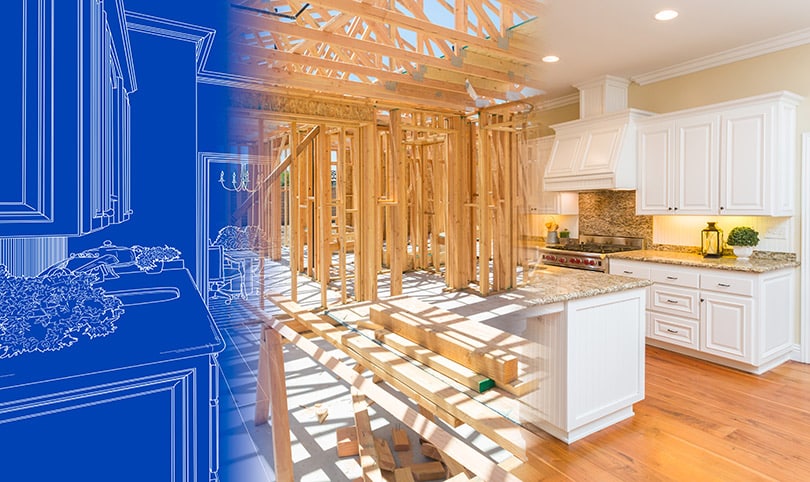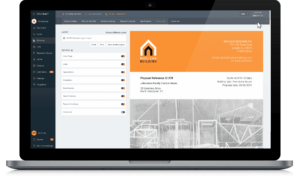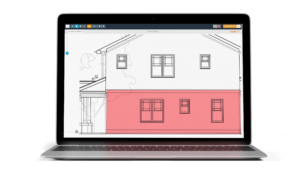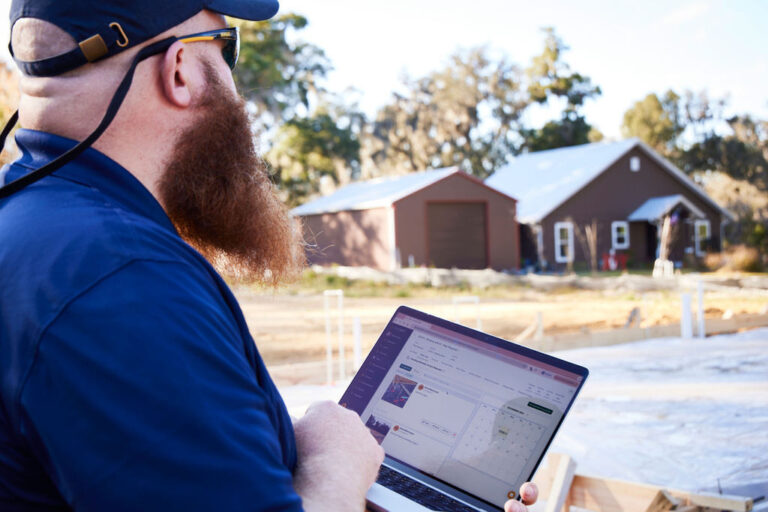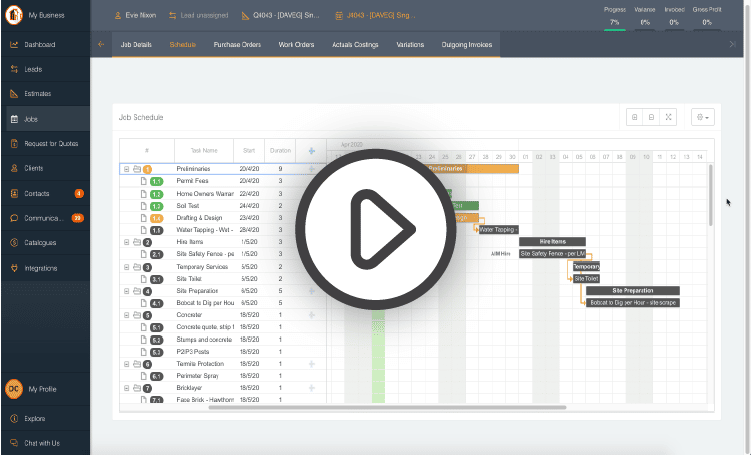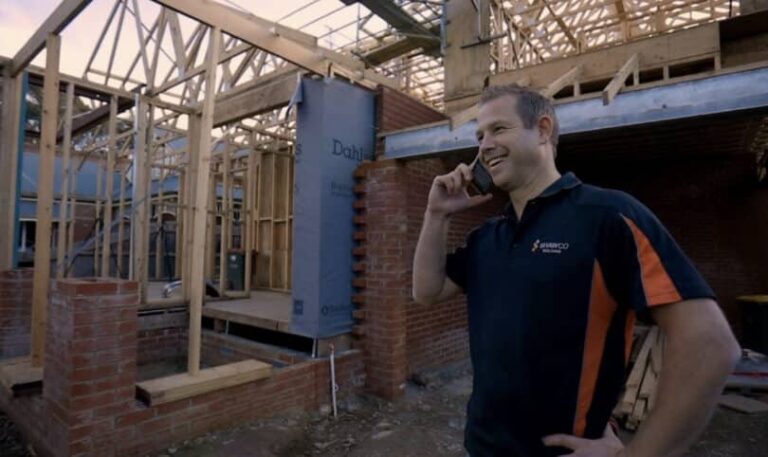If you’re managing a construction project for the first time, you’ll recognise many challenges ahead of you. Good planning and design can be done in essential stages, as is the ability to oversee a large volume of work and, often, a large project team.
It’s not just the planning and execution of the project itself that requires your attention either. There will also be follow-ups, such as inventories, resources, and organising supplies throughout the construction project life.
To ensure success before your next construction project begins, you need to understand the stages in construction project management. Here’s what you need to know about the construction project life cycle to ensure a successful project, from start to finish.
What are the main stages of construction projects?
There are a few main stages of a construction project, and these include concept, design, preconstruction, procurement, construction and post-construction. Each one of these stages of construction is an equally important part of the entire project, and none can proceed without the other being completed.
The following are the basic building blocks of any construction project:
1. Conception stage
The conception stage is where the 6 stages of the construction process begin. Typically, as a homebuilder you will have started here by consulting with planners, architects and engineers you have taken a homeowner’s idea to drawings and plans.
Depending on the size and scope of the project, this project planning phase may mean consultations with town/city planners. You may also need to consult an estimator or do the project estimate yourself to determine if it’s financially viable.
The concept stage is one of the most important phases in the lead up to construction. It gets costings to your idea onto paper—the first concrete step to making the homeowner’s dream a reality.
Common challenges in conception
A few common challenges pop up during this conception phase. These can include the following:
- Design flaws—it’s important that you and your architect work together with your structural and civil engineers to create an architectural blueprint that’s flawless.
- Bureaucracy—everyone hates bureaucracy, but it can be particularly frustrating when you’re in the preconstruction phase and need paperwork to clear. While this isn’t necessarily your fault, it’s a common, frustrating problem.
- Poor-Defined Objectives—another common challenge is communicating requirements and limitations to your client and contractors – whether you’ve failed in this respect or members of your team have – not having a clearly-defined goal can slow things down.
2. Design stage
The next planning stage is the design, where you build project specifications. In this stage, you’ll hammer out your concepts and start talking more with architects and engineers.
As one of the 6 stages of the construction project, your design phase will take on the challenge of bringing the concepts to paper – getting monetary figures and drawings on how large the building will be, its shape and size, the number of rooms, how the rest of the space will be used, and so on.
This phase allows you to determine exactly how it will be done and even what materials you’ll use. The colours of various materials you’ll use (interior and exterior) and the pricing of those materials.
Common challenges in design development
A few main challenges can crop up during the design stage in construction. These include:
- Inconsistencies in measurements across different types of blueprints. Your architect will need to make these measurements again to solve for discrepancies.
- Over or Under-Estimation—you make money by providing accurate estimates using various tools. However, this estimate is just that – an estimate – and can be under or over based on factors outside of your control, like material price changes. More on that later.
- Misreading of blueprints by other tradesmen who will do work based on those designs. Electricians and builders sometimes misread each other’s design plans.
- Structural design errors crop up due to misreading or misinterpreting (sometimes) vague building code language. Consult your planning phase team and the town/city building code department if this becomes a problem.
3. Preconstruction stage
The preconstruction stage is where you’ll build your project team. The project team begins as the core group that will carry your project forward through the next construction process stages.
By this point, your site will have been chosen and approved and your homeowner has approved your bid.
Site & foundation preparation
One of the integral construction stages of building a house is the site visit, where the soil is tested – this is done to test for any contaminants that prevent successful well drilling or possibly endanger the structural integrity of the home’s foundation.
Other site work can include pouring the foundations. Plumbing and drainage may also be installed during this process.
Getting the foundation down and breaking ground is one of the most important stages of building construction.
Rough framing
Rough framing will also occur during this process based on your measurements. This means timbers will go up to rough measurements, and the house’s exterior shape will begin to take place. This is also true if you’re building an addition. Rough framing is one of the stages of building an extension.
Common challenges
There are a few common challenges when conducting the preconstruction phase of any project. These can include:
- Labour shortages—One of the hurdles facing almost every home construction company is labour shortages. This shortage means that site work, such as rough framing, may be delayed considerably if your contractor is experiencing issues due to this shortage. Be sure to consult with them before awarding them the contract.
- Material shortages—Another huge challenge to the preconstruction phase of projects is material shortages. It’s important to plan far ahead when purchasing materials from your dealer to ensure the best price and timely delivery.
4. Procurement stage
Once you’re sure that the site is good to go, it’s time to order materials and schedule trades to begin the main construction stage of building a house.
Common challenges
The procurement stage is also where construction companies can run afoul of the current construction industry climate. A variety of challenges include.
- Lengthy procurement cycles—due to the market being the way it is at the moment – high demand, low supply – you may find that you’re quoted with weeks or months-long delays for specific materials.
- Cost fluctuations—again, blame the market! You may discover that materials you were quoted a few months ago have now skyrocketed in price. This may force you to make different material choices depending on budget allowances.
- Quality assurance—while this is not necessarily your responsibility, one of the common challenges facing procurement departments is quality assurance. At the end of the day, you may receive sub-quality materials because your supplier decided to ship 2x4s that are actually 2×3.75s.
5. Construction stage
The construction stage is where the rubber meets the road. It’s where you’ll start to see your project come to life.
This phase is usually one of the longest construction phases of building a house. It takes months to come to fruition. It’s also the most rewarding part of the construction process stages.
Common challenges
When it comes to the final stages of your construction project, you’re bound to encounter some unforeseen issues. Here are some common challenges during the construction stages of building a house.
- Health And Safety—this is one of the biggest of any construction company owner out there. The health and safety of your employees are always your top priority. In the construction phase, an accident can occur, which can cause huge delays in the project for various reasons.
- Linear Process Delays—the construction phase of any project is the longest one. It is also a linear process, meaning that work needs to be completed before other work can begin.
- The Weather—everyone who works in construction hates that they’re at the mercy of Mother Nature. Certain construction phases won’t proceed in heavy rain or blinding heat.
6. Postconstruction stage
The postconstruction stage is the final stage of the construction phase plan. The postconstruction phase is where the build is completed and the new owner eventually takes possession. However, there are several steps to go through first.
Performance and monitoring
One of the key parts of this stage is monitoring the building once it’s finished for any signs of faults – this may require days or weeks. Meanwhile, other things can happen behind the scenes, such as contract closures, worker payments and equipment returns.
Team meetings can occur to discuss what went well with the project and what didn’t, and what changes can be made on the next project to help things run smoother – time is money, after all.
Closure
Closing the project means delivering the keys for the new construction to the new owner, closing and sealing all contracts, and getting paid for the work completed.
Common challenges
Despite being the end of the line, closure brings challenges. These can include:
- Projects wind up over-budget.
- Customers are unhappy with the finished product.
- Projects vastly outperform projected profit margins.
- The project reveals gaping holes in business operations/project management.
Using construction software to manage projects
If you’re struggling with any parts of your construction stages, it’s time to turn to construction software to manage projects.
Whether your problems are efficiency, cash flow, material supply issues, or simply a labour delegation problem, using a construction project management software like Buildxact can help to remove the human element from your business operations.
Construction management software like Buildxact will give you a complete picture of how your project succeeded and where it failed, as well as allowing you to see insights that could prove invaluable for the next project.
Buildxact offers an all-in-one platform that can help you achieve these goals. Learn more about affordable monthly pricing. You also can book a demo or start right away with a no-hassle 14-day free trial.




